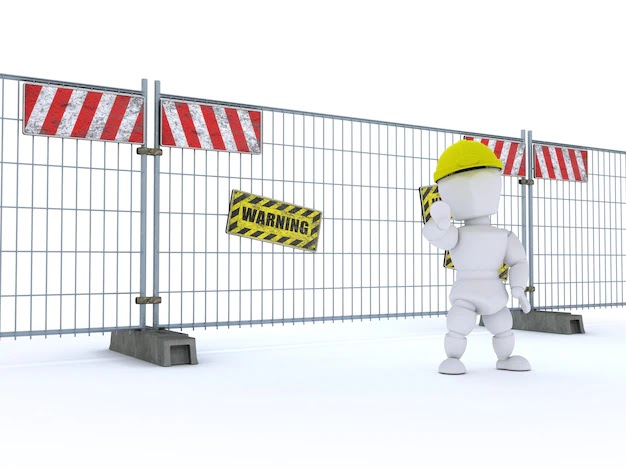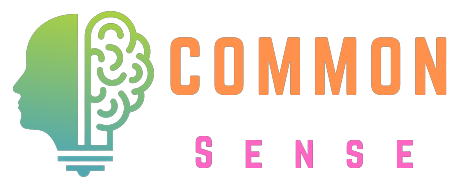
Time Management in Problem-Solving
I. Understanding the Role of Time in Problem-Solving
Time is often a limited resource, especially when dealing with pressing issues. Mismanagement of time during problem-solving can lead to delayed decisions, increased stress, and a ripple effect of inefficiencies. By streamlining the process, individuals and teams can focus on actionable steps, reduce bottlenecks, and achieve results faster.
II. Define the Problem Clearly
One of the biggest time-wasters in problem-solving is tackling the wrong issue or approaching it without clarity. Start by:
1. Identifying the core problem: Ask what the issue is and why it matters.
2. Breaking it down: Divide complex problems into smaller, manageable parts.
3. Setting objectives: Define what a successful solution looks like.
Not all problems require immediate attention. Use prioritization frameworks like the Eisenhower Matrix to categorize issues based on urgency and importance.
1. Urgent and important problems should be addressed immediately.
III. Prioritize the Issues
Not all problems require immediate attention. Use prioritization frameworks like the Eisenhower Matrix to categorize issues based on urgency and importance.
1. Urgent and important problems should be addressed immediately.
2. Important but not urgent problems can be scheduled for later.
3. Delegate tasks that are urgent but not important.
Open-ended problem-solving can lead to overthinking and procrastination. By allocating specific time limits to each phase of the process—problem definition, brainstorming, analysis, and decision-making—you can keep the process moving forward. Use tools like timers or apps to stay on track.
Working in a team can accelerate problem-solving if managed correctly. Ensure:
1. Clear roles and responsibilities: Assign tasks to those best equipped to handle them.
IV. Set a Time Limit for Each Step
Open-ended problem-solving can lead to overthinking and procrastination. By allocating specific time limits to each phase of the process—problem definition, brainstorming, analysis, and decision-making—you can keep the process moving forward. Use tools like timers or apps to stay on track.
V. Leverage the Power of Collaboration
Working in a team can accelerate problem-solving if managed correctly. Ensure:
1. Clear roles and responsibilities: Assign tasks to those best equipped to handle them.
2. Effective communication: Use concise updates and avoid lengthy meetings.
3. Technology: Tools like shared documents and project management platforms can streamline collaboration.
Overanalyzing data and options can delay decision-making. To overcome this:
1. Focus on key information: Identify what’s truly relevant to the problem.
VI. Avoid Analysis Paralysis
Overanalyzing data and options can delay decision-making. To overcome this:
1. Focus on key information: Identify what’s truly relevant to the problem.
2. Set decision deadlines: Commit to making a choice by a specific time.
3. Embrace imperfection: Understand that no solution is perfect, but timely action is often better than waiting for perfection.
Frameworks provide structure and save time. Popular ones include:
1. The 5 Whys: Helps identify the root cause of a problem.
VII. Use Problem-Solving Frameworks
Frameworks provide structure and save time. Popular ones include:
1. The 5 Whys: Helps identify the root cause of a problem.
2. SWOT Analysis: Evaluates strengths, weaknesses, opportunities, and threats.
3. PDCA Cycle (Plan, Do, Check, Act): Ensures continuous improvement.
Distractions can derail even the most efficient problem-solving efforts. To stay focused:
1. Create a dedicated workspace: Ensure a quiet, organized environment.
VIII. Eliminate Distractions
Distractions can derail even the most efficient problem-solving efforts. To stay focused:
1. Create a dedicated workspace: Ensure a quiet, organized environment.
2. Turn off notifications: Silence devices to minimize interruptions.
3. Batch similar tasks: Handle related issues together to maintain flow.
Once a solution is implemented, evaluate its effectiveness. Reflect on:
1. What worked and what didn’t: Identify areas for improvement.
IX. Evaluate and Adjust
Once a solution is implemented, evaluate its effectiveness. Reflect on:
1. What worked and what didn’t: Identify areas for improvement.
2. Time efficiency: Was the time spent proportional to the results achieved?
3. Adjustments for future problems: Use lessons learned to refine your approach.
Numerous tools can assist with time management in problem-solving, including:
1. Project management apps: Trello, Asana, or Monday.com for tracking progress.
X. Use Technology to Stay Organized
Numerous tools can assist with time management in problem-solving, including:
1. Project management apps: Trello, Asana, or Monday.com for tracking progress.
2. Brainstorming tools: Miro or MindMeister for generating ideas.
3. Time-tracking apps: Toggl or RescueTime to monitor how time is spent.
Stress and frustration often accompany problem-solving. Emotional intelligence helps manage these emotions, enabling clear thinking and better time utilization. Techniques include:
1. Mindfulness: Stay present and focused.
XI. Practice Emotional Intelligence
Stress and frustration often accompany problem-solving. Emotional intelligence helps manage these emotions, enabling clear thinking and better time utilization. Techniques include:
1. Mindfulness: Stay present and focused.
2. Empathy: Understand team dynamics and foster collaboration.
3. Self-regulation: Avoid impulsive decisions by staying calm.
Skipping Planning: Jumping into action without a clear plan can lead to wasted time.
Ignoring Input: Failing to seek advice or feedback can result in incomplete solutions.
Multitasking: Trying to solve multiple problems simultaneously often reduces efficiency.
Integrating time management into problem-solving leads to:
1. Faster results: Timely solutions prevent delays in overall workflow.
XII. Common Pitfalls to Avoid
Skipping Planning: Jumping into action without a clear plan can lead to wasted time.
Ignoring Input: Failing to seek advice or feedback can result in incomplete solutions.
Multitasking: Trying to solve multiple problems simultaneously often reduces efficiency.
XIII. The Benefits of Efficient Problem-Solving
Integrating time management into problem-solving leads to:
1. Faster results: Timely solutions prevent delays in overall workflow.
2. Improved decision-making: Focused efforts lead to better outcomes.
3. Reduced stress: A structured approach minimizes last-minute pressure.

Effective problem-solving isn’t just about finding the right solution—it’s about finding it in the right time. Time management in problem-solving is by integrating time management principles into your approach, you can tackle challenges efficiently, maintain productivity, and create a smoother path to success. With practice, these strategies will not only save time but also enhance the quality of your solutions, benefiting both individuals and teams alike.
Ques 1: Why is time management important in problem-solving?
Ans: Time management is essential in problem-solving because it ensures that tasks are completed efficiently without unnecessary delays. By managing time effectively, you can allocate sufficient focus to each step of the process, avoid overthinking, and meet deadlines while maintaining productivity. It also reduces stress and enhances decision-making by streamlining efforts toward actionable outcomes.
Ques 2: How can I prioritize tasks during problem-solving?
Ans: Prioritization can be achieved using tools like the Eisenhower Matrix, which categorizes tasks based on urgency and importance. Focus first on problems that are both urgent and important. Schedule important but non-urgent issues for later, delegate urgent but less important tasks, and avoid or eliminate tasks that are neither urgent nor important. This approach ensures you concentrate on what truly matters.
Ques 3: What are some common time-wasting habits in problem-solving?
Ans: Common time-wasting habits include overanalyzing data (analysis paralysis), tackling problems without clear definitions, multitasking, and frequent distractions. These behaviors can lead to delays, reduced efficiency, and incomplete solutions. To overcome them, set clear objectives, establish deadlines, and maintain focus on the task at hand.
Ques 4: How do frameworks like the 5 Whys or SWOT analysis save time?
Ans: Problem-solving frameworks provide a structured approach, eliminating the need to devise methods from scratch. The 5 Whys help identify root causes quickly, while SWOT analysis evaluates internal and external factors affecting the issue. These frameworks guide efforts in a focused manner, reducing trial and error.
Ques 5: How can I stay focused during the problem-solving process?
Ans: To stay focused, create a distraction-free environment by silencing notifications, organizing your workspace, and setting clear boundaries. Use time-blocking techniques to allocate specific periods for problem-solving. Additionally, practice mindfulness to maintain presence and emotional regulation, ensuring clarity and calmness throughout the process.

Conclusion
Effective problem-solving isn’t just about finding the right solution—it’s about finding it in the right time. Time management in problem-solving is by integrating time management principles into your approach, you can tackle challenges efficiently, maintain productivity, and create a smoother path to success. With practice, these strategies will not only save time but also enhance the quality of your solutions, benefiting both individuals and teams alike.
FAQ
Ques 1: Why is time management important in problem-solving?
Ans: Time management is essential in problem-solving because it ensures that tasks are completed efficiently without unnecessary delays. By managing time effectively, you can allocate sufficient focus to each step of the process, avoid overthinking, and meet deadlines while maintaining productivity. It also reduces stress and enhances decision-making by streamlining efforts toward actionable outcomes.
Ques 2: How can I prioritize tasks during problem-solving?
Ans: Prioritization can be achieved using tools like the Eisenhower Matrix, which categorizes tasks based on urgency and importance. Focus first on problems that are both urgent and important. Schedule important but non-urgent issues for later, delegate urgent but less important tasks, and avoid or eliminate tasks that are neither urgent nor important. This approach ensures you concentrate on what truly matters.
Ques 3: What are some common time-wasting habits in problem-solving?
Ans: Common time-wasting habits include overanalyzing data (analysis paralysis), tackling problems without clear definitions, multitasking, and frequent distractions. These behaviors can lead to delays, reduced efficiency, and incomplete solutions. To overcome them, set clear objectives, establish deadlines, and maintain focus on the task at hand.
Ques 4: How do frameworks like the 5 Whys or SWOT analysis save time?
Ans: Problem-solving frameworks provide a structured approach, eliminating the need to devise methods from scratch. The 5 Whys help identify root causes quickly, while SWOT analysis evaluates internal and external factors affecting the issue. These frameworks guide efforts in a focused manner, reducing trial and error.
Ques 5: How can I stay focused during the problem-solving process?
Ans: To stay focused, create a distraction-free environment by silencing notifications, organizing your workspace, and setting clear boundaries. Use time-blocking techniques to allocate specific periods for problem-solving. Additionally, practice mindfulness to maintain presence and emotional regulation, ensuring clarity and calmness throughout the process.







Do Leave Your Comment